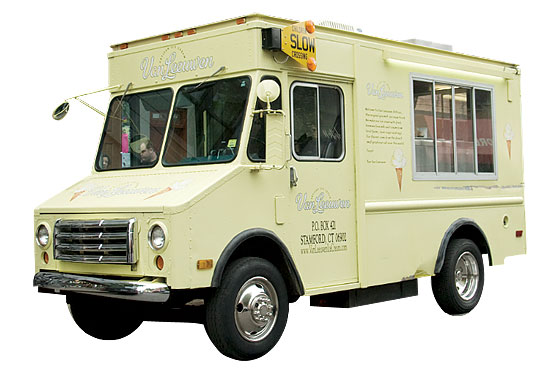
The greasy halal truck, set against gleaming towers of commerce, has long been a symbol of New York’s collision of high and low culture. For years, the trucks have given white-collar workers the opportunity to escape their chilled, restrained corporate lives for the loud, hot, authentic experience of ordering directly from a cook who covered sizzling lamb and hissing onions with a mysteriously viscous white sauce. But in 2007, street food entered a perhaps-inevitable era of gentrification: Gourmet food trucks began to pop up. Like the old working-class trucks, the new versions pulled conveniently up to the curb, but they had catchy names, whimsical concepts, and flashy logos. The person inside still cooked the food on site, but he had culinary aspirations and sometimes even institutional training. Ingredients were “sourced” locally. Some trucks were seen by their aspiring-mogul proprietors as means to an end, proof-of-concept launchpads for food-brand empires.
In retrospect, the gourmet trucks were pretty much asking for trouble. Before their arrival, the city had tacitly allowed the working-class vendors to occupy a legal gray area—they were running businesses out of parking spaces. But as more and more trucks took to the streets and attracted round-the-block lines, the city started hearing complaints about sidewalk congestion and trash, while brick-and-mortar shopkeepers began to ask why these upstarts could get away with forgoing rent and taxes in favor of feeding a parking meter.
The proliferation of trucks forced the city’s hand. Inevitably, police ticketed and towed a truck, triggering a lawsuit. To justify its actions, the city cited a sixties-era law prohibiting the “peddler, vendor, hawker, or huckster” from using metered parking spaces to sell merchandise. Earlier this year, the ruling came down: Food, the court decided, was merchandise, and the trucks could be legally booted.
The end of an era seemed imminent. The New York City Food Truck Association (NYCFTA)—which represents mostly upscale trucks and counts former I-bankers and lawyers among its members—faced a crisis only months after organizing. But with the end in sight, the parties have reached what appears to be a grand bargain. The city and the NYCFTA are teaming up to find legal locations for the trucks to vend, while some private entrepreneurs have offered space for regular food-truck rallies. One opened in early August in Long Island City to much blogger excitement. Meanwhile, observation seems to indicate that—with their upscale, attention-seeking, block-long-line-creating kin scared off by the court ruling and a subsequent police crackdown—the old working-class trucks have been able to stay in business, slipping around under the radar like they used to.
So there are those who vend because they can, and there are those who vend because they must—the nongourmet taco trucks and gyro outlets—and it’s the ones who can who will trek off to their sanctioned gathering places, happily carrying the spotlight of city approval and media attention. The ones who must, God willing, will stay and thrive in the legal gray area they’ve always braved for the sake of our authentic New York experience.
Have good intel? Send tips to intel@nymag.com.